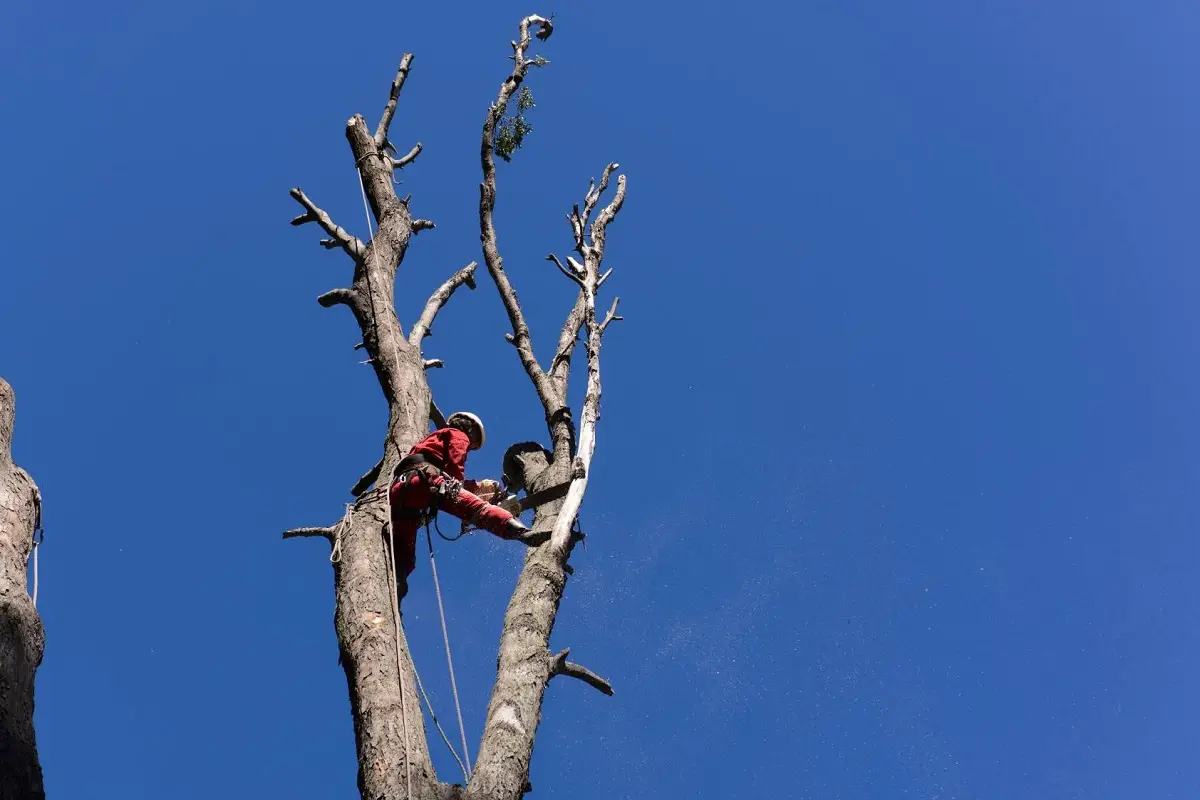Chainsaws are very dangerous tools that need to be handled with caution and attention. If you make a mistake, it can cost you. In this post, we list the most common chainsaw injuries and how to avoid them.
Top 5 Most Common Chainsaw Injuries
1. Cuts To The Hands Or Fingers
Cuts to the hands or fingers are the most likely injury from using or handling a chainsaw. Chainsaw chains have many sharp teeth that can quickly cause serious cuts. Always wear gloves when using or handling a chainsaw.
2. Cuts To The Legs Or Feet
Cuts to the legs or feet are actually fairly common chainsaw injuries. This most often occurs when cutting a piece of wood on or near the ground. The chainsaw can slip and hit your leg or foot. Sometimes the chainsaw can even go through your boot. Kickback is another cause of feet or leg injuries from using chainsaws.
If this happens, it is important to get medical attention right away. Even if the chainsaw did not cut your skin, the force of the impact can break bones. In a worst-case scenario, a chainsaw injury to the leg or foot can result in an amputation due to too much damage.
3. Cuts To The Head
The head of a person is also susceptible to chainsaw injuries. These are usually severe cuts that occur when a chainsaw kicks back or somehow falls onto a person. The chainsaw can cause cuts to the scalp, skull, face, and neck. These types of cuts are often fatal. Even if a person survives, they will most likely be disfigured. If you are cutting tree branches above your head, always be extra careful and wear eye and head protection.
4. Face Injuries
Facial injuries are unfortunately possible while using a chainsaw. The biggest cause of facial injuries is chainsaw kickback. Because the chainsaw can kickback with such force, it can easily hit you in the face if you’re not careful. Always be aware of where the chainsaw is pointing and be sure to wear proper safety gear, including a face shield while operating a chainsaw.
5. Falling From Heights While Using A Chainsaw
Falling from heights is a major cause of chainsaw injuries. Even if the chainsaw does not contact your body, you can still hurt yourself from the fall. Use a chainsaw only while standing on the ground.

This can lead to cutting your limbs, or it falling onto you or another person or object. Do not use a chainsaw while standing on a ladder or in a tree, unless you are a trained professional. Also, it is not recommended to stand on a ladder or stool while using a chainsaw.
Ways To Prevent Chainsaw Injuries
In the U.S. alone, over 30,000 chainsaw injuries occur each year. Preventing such injuries requires attention, vigilance, and wearing the proper safety gear. The cause of most chainsaw injuries is contacting the rotating chain with a body part. Even a stationary chainsaw that is not running can cause a hand injury if it is handled improperly.
There are ways to prevent injuries while using a chainsaw that does not require lots of training effort.
Wear Chainsaw Safety Gear
Basic chainsaw safety gear includes:
- Chainsaw chaps or pants
- Gloves
- Boots with steel toes
- Hearing protection
- Chainsaw-resistant shirt or jacket
- Face visor and helmet
- Safety glasses
In addition, the chainsaw operator should be aware of his or her surroundings and be careful not to cut into anything that might cause the chainsaw to bind.
To Close
You can prevent chainsaw injuries by following proper safety procedures, keeping an eye on your surrounding, and not taking any excessive risks. Chainsaws are extremely dangerous tools that can cause serious injuries if not used correctly. Make sure to read your chainsaw instruction manual for details on how best to use them.

